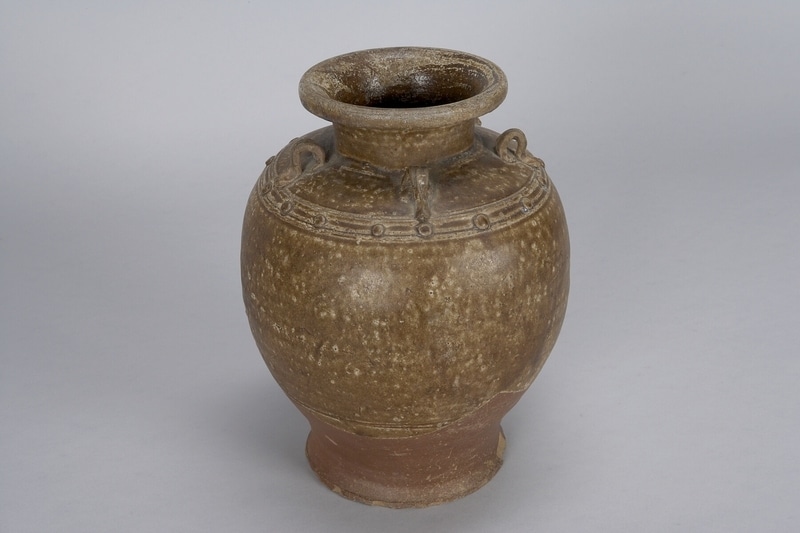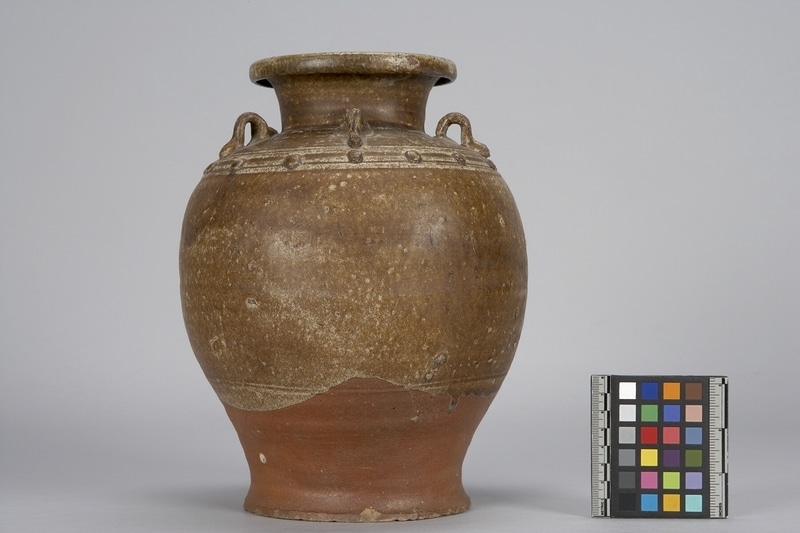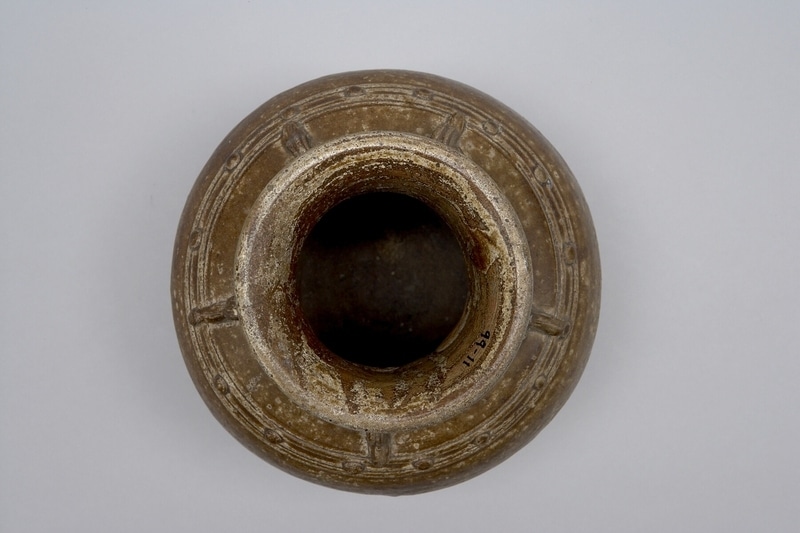Jar Item Number: Ia271 from the MOA: University of British Columbia



Description
A small globular jar with wide mouth, flat base and five grooved lugs on the shoulder. The shoulder also has a collar of moulded buttons. The lower third of the jar is unglazed. A set of inked numbers is on the lip.
History Of Use
Chinese ceramics were important trade items in Southeast Asia during the 11th - 16th century C.E. Due to their physical characteristics - resonance, vitreosity and durability - Chinese ceramics became fully integrated with the ideology and ritual in Philippine societies and played an important role in all aspects of cultural life (Langrick, p.61). Their functions were varied and included utilitarian, ceremonial, religious roles, as heirlooms, in mortuary ceremonies as burial goods and as items of prestige.
Cultural Context
exchange; status; ceremonial; heirloom
Iconographic Meaning
In many indigenous groups of the Philippines, supernatural power was attributed to Chinese ceramics because of the ringing sound emitted when lightly tapped and their vitreous, shiny glazed surfaces which impart an impermeable quality. The ringing sound was seen as a magical voice able to attract the attention of powerful ancestor spirits. Their impermeable and seemingly imperishable surfaces were believed to have great protective power against all kinds of influences, from evil spirits to poisons (Langrick, p. 55-56).
Narrative
An heirloom piece, defined by Dr. Tecson as one never in the ground, hence different from an excavated piece, and not necessarily from his family. This piece is from Zamboanga del Sur, Mindanao Island, Philippines.
Item History
- Made in Zamboanga Del Sur, Philippines between 1399 and 1500
- Owned by Julia Tecson and Miguel Tecson before November 16, 1987
- Received from Julia Tecson (Donor) and Miguel Tecson (Donor) on November 16, 1987
What
Who
- Culture
- Philippines
- Previous Owner
- Julia Tecson and Miguel Tecson
- Received from
- Julia Tecson (Donor) and Miguel Tecson (Donor)
Where
- Holding Institution
- MOA: University of British Columbia
- Made in
- Zamboanga Del Sur, Philippines
When
- Creation Date
- between 1399 and 1500
- Ownership Date
- before November 16, 1987
- Acquisition Date
- on November 16, 1987
Other
- Item Classes
- ceramics
- Condition
- good
- Accession Number
- 1262/0022